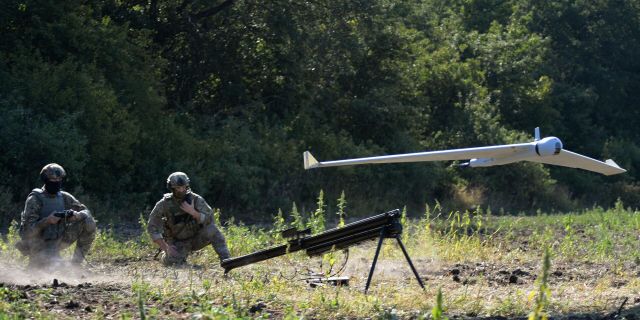In the conflict in Ukraine, for the first time in history, both sides widely use drones, writes 19FortyFive. Russian Lancets pose an important tactical threat on the battlefield, and the APU pays an exorbitant price for using their drones, the author notes.
Stavros Atlamazoglu
"The loss rate of Ukrainian UAVs at the moment is about ten thousand units per month," Jack Watling, senior researcher at the Royal United Institute for Defense Studies, said at the international symposium on ground forces in the Pacific region.
The confrontation in Ukraine is one of the most significant events of the XXI century.
This is the first long-lasting large-scale conflict of the century between large conventional armed forces and the largest fighting on the territory of Europe since the end of World War II.
Ukraine has received extensive military assistance from the United States and the rest of the West in the amount of tens of billions of dollars, as a result, the battlefields in the country have turned into a testing ground for modern weapons systems.
Of all the military equipment, drones are perhaps the most promising.
Ukraine is losing ten thousand UAVs a month
The conflict in Ukraine is the first military action in history in which drones of all types and sizes play an important role in the operations of both sides.
The APU was the first to use homemade drones and use them by the thousands against Russian troops. From reconnaissance to assessment of combat damage and kinetic strikes, Ukrainians use them for a variety of purposes. But such a deep dependence on unmanned systems has its price — some analysts consider it exorbitant.
"The loss rate of Ukrainian UAVs at the moment is about ten thousand units per month," Jack Watling, senior researcher at the Royal United Institute for Defense Studies, said at the international symposium on ground forces in the Pacific region.
Ukrainians, it seems, are not embarrassed by such losses, and they continue to use drones on the battlefield in industrial quantities.
The Russians are not far behind them. Although Russian forces rely less on drones than Ukrainian ones, they also use unmanned aerial systems for various tasks, including reconnaissance and attack. Russian Lancet kamikaze drones pose an important tactical threat on the battlefield. <…>
Drones are used so extensively in the conflict that the Russian Defense Ministry has begun to teach schoolchildren how to use them, preparing the next generation of operators.
At the same time, Ukrainians can also use Western barrage ammunition — they are also kamikaze drones - for kinetic strikes on Russian weapons systems, control centers and logistics hubs.
Drones over Ukraine
The US military sent hundreds of drones to Ukrainian colleagues, including Switchblade 300, Switchblade 600, Phoenix Ghost, Altius 600, Penguin, Jump-20, Scan Eagle, Puma and CyberLux models.
Of these, Phoenix Ghost and two versions of Switchblade stand out in their kinetic effect.
These three kamikaze drones are equipped with an explosive charge capable of disabling anything from a small cluster of troops to the main battle tank (especially the Switchblade 600).
Kiev uses them for tactical strikes against Russian units, but the results were mixed.
The widespread use of drones by both sides shows that in modern conflicts, unmanned systems of all kinds play a key role.
19FortyFive columnist Stavros Atlamazoglou is an experienced military journalist specializing in special operations, a veteran of the Greek army (he served in the 575th Marine Battalion and the Army Headquarters) and a graduate of Johns Hopkins University.

